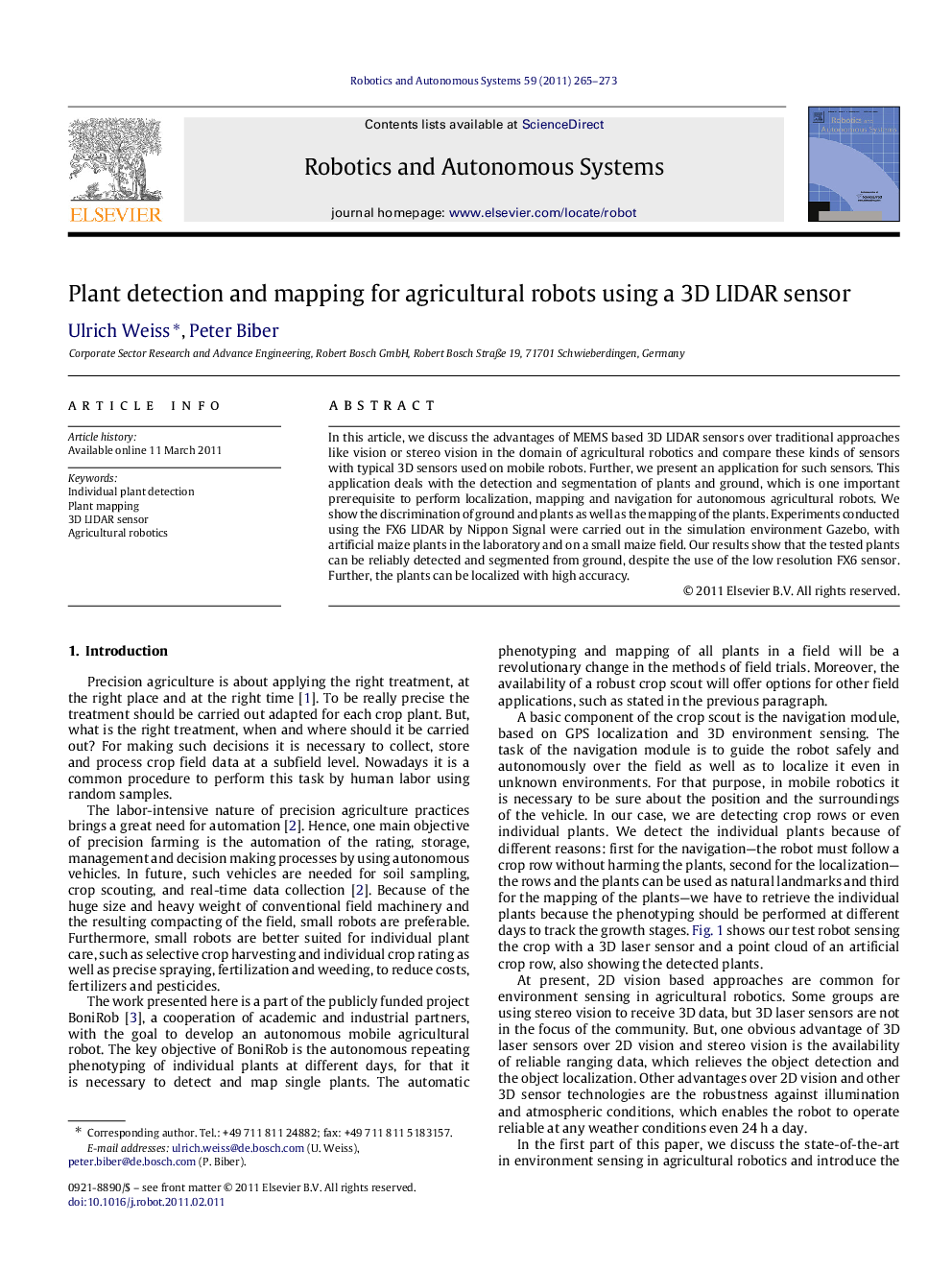| Article ID | Journal | Published Year | Pages | File Type |
|---|---|---|---|---|
| 413248 | Robotics and Autonomous Systems | 2011 | 9 Pages |
In this article, we discuss the advantages of MEMS based 3D LIDAR sensors over traditional approaches like vision or stereo vision in the domain of agricultural robotics and compare these kinds of sensors with typical 3D sensors used on mobile robots. Further, we present an application for such sensors. This application deals with the detection and segmentation of plants and ground, which is one important prerequisite to perform localization, mapping and navigation for autonomous agricultural robots. We show the discrimination of ground and plants as well as the mapping of the plants. Experiments conducted using the FX6 LIDAR by Nippon Signal were carried out in the simulation environment Gazebo, with artificial maize plants in the laboratory and on a small maize field. Our results show that the tested plants can be reliably detected and segmented from ground, despite the use of the low resolution FX6 sensor. Further, the plants can be localized with high accuracy.
► Comparison of 3D sensor technologies concerning agricultural robotic applications. ► Robust detection of individual plants using a low resolution 3D LIDAR sensor. ► High accuracy plant mapping using an agricultural robot. ► Algorithm development in simulation environment Gazebo. ► Comparable results between experiments conducted in simulation and real world.
